The views expressed in our content reflect individual perspectives and do not represent the authoritative views of the Baha'i Faith.
Several of the Indigenous tribes in the Americas have been subjected to vigorous study by anthropologists and other scientists – so much, in fact, that jokes have arisen as a result.
The well-known Navajo Baha’i Franklin Kahn once joked that a Navajo family consists of a grandmother, her married daughters and their husbands, her daughters’ children, and an anthropologist!
Speaking of anthropologists, in our previous article, I wrote that I did a lot of searching and sifting, critically reading and carefully considering the various sources I consulted about the Penobscot traditions regarding Gluskap, as documented by the highly respected anthropologist, Frank G. Speck.
I did so much critical sifting because the following journal article put my scholarly instincts on guard: Thomas Parkhill, “Of Glooskap’s Birth, and of His Brother Malsum, the Wolf”: The Story of Charles Godfrey Leland’s “Purely American Creation,” in American Indian Culture and Research Journal Vol. 16, No. 1 (1992): pp. 45–69, in which Professor Parkhill cautioned:
Whatever else it is, Leland’s disregard for the integrity of the traditions he studied is bad scholarship that has encouraged more bad scholarship. … The process of how Leland came to compose “Of Glooskap’s Birth,” indeed his story-gathering and editing methods in general, serve to remind students of Native American religions to be careful, even suspicious, when considering sources and to be tentative about their findings.
I have to be tentative myself about the impact of Leland’s promotion of the Kluskap twin story on the self-understanding of native people. There is some evidence that some Abenaki and Micmac peoples have appropriated the Kluskap-Malsum story, that their creative response has been to make this story their own. – Parkhill, “Of Glooskap’s Birth,” p. 61.
I took this statement as a word of caution, to be ever-vigilant, circumspect and careful when vetting the primary sources on which we rely.
Q: So Kevin, would you say that in this “Indigenous Messengers of God” essay series, you and I have been careful and circumspect in selecting our sources? Would you agree that we’ve practiced this one implication of two fundamental Baha’i principles: (1) independently investigating truth; and (2) harmonizing science and religion?
A: I am always very cautious, Chris, about believing anything I read that I am not already familiar with. Here’s a good example – the universally accepted English translation of Dakota/Lakota to mean “allies” or “friends.”
Too bad no one bothered to ask one of the tens of thousands of fluent native speakers who could have instantly rebutted this translation.
Another example: the widely accepted but wrong idea that there are three dialects spoken in South Dakota; Dakota, Lakota and Nakota. Nakota is a separate language division (sometimes referred to as Assiniboine and Stoney) with its own dialects spoken by a small group in Montana and more extensively throughout Manitoba, Saskatchewan and Alberta. It is not intelligible to the four Dakota dialects and one Lakota dialect spoken in various communities in South Dakota, North Dakota, Nebraska, Montana, Manitoba and Saskatchewan.
Although I have traveled extensively through Micmac, Passamaquody, Penobscot communities in Maine and Nova Scotia, I have never heard much about Gluskap. I think the people of that region are collectively known as Wabanaki. It is fascinating to me that, despite overwhelming pressure from contact with Europeans from the beginning of the colonization era, they retain total fluency in their languages and have maintained enduring community cohesion. This alone indicates to me a powerful spiritual tradition, possibly established by Gluskap.
Q: The anthropologist Frank G. Speck died in 1950, the year when I was born. In an obituary published in 1951, scholar A. Irving Hallowell wrote, in part:
Speck not only studied American Indians, but was deeply attached to them. They were as much a part of his personal as his professional life. … In fact, the abiding interest he had in their languages and all other aspects of their mode of life and thought long antedated his entrance into anthropology as a scholarly discipline. – quoted by Elisabeth Tooker, “Frank G. Speck,” Expedition Magazine 29.1 (1987), https://www.penn.museum/sites/expedition/frank-g-speck/
Among others, I consulted this long article: Frank G. Speck, “Penobscot Tales and Religious Beliefs,” Journal of American Folklore Vol. 48, No. 187 (Jan.–Mar., 1935), pp. 1–107.
The official “Penobscot Nation” website opens with this greeting: “kkʷey (hello), and welcome to the home of the Penobscots ‘… the oldest continuous government in the world …’.” https://www.penobscotnation.org/.
So, Kevin, what do you know about the Penobscot Nation? Are the Penobscot closely related to the Passamaquoddy?
A: All of the various Wabanaki speak cognate languages of the Algonquin language family.
Q: Professor Speck wrote: “The spiritual force dominating the universe is a power, or opinions of some a being, called Ketci-Ni’-wskwe, Great Being” (p. 4). Baha’u’llah also uses this term, the “Great Being,” as a name for God:
The Great Being saith: O well-beloved ones! The tabernacle of unity hath been raised; regard ye not one another as strangers. Ye are the fruits of one tree, and the leaves of one branch. … That one indeed is a man who, today, dedicateth himself to the service of the entire human race.
The Great Being saith: Blessed and happy is he that ariseth to promote the best interests of the peoples and kindreds of the earth. In another passage He hath proclaimed: It is not for him to pride himself who loveth his own country, but rather for him who loveth the whole world. The earth is but one country, and mankind its citizens. – Baha’u’llah, Tablets of Baha’u’llah, pp. 164, 167.
Interesting coincidence, isn’t it?
A: Many if not most Indigenous North Americans refer to the supreme deity as “Great Spirit,” Great Being” or something analogous to that.
Q: Professor Speck went on to say:
Gluskabe the Transformer: The most important personage in Penobscot religious lore and one purely aboriginal in character is named Gluskabe (gluski is translated as “deceit, lie, nothing.” -dbe or -abe is a stem denoting “person”), “deceiver, liar,” or “man from nothing,” according to different opinions among informants. The translation may be Deceiver or Trickster, the epithet is not uncomplimentary because it refers to the ability to outwit one’s enemies by strategy and cunning. He is the hero and transformer personage of the Wabanaki tribes. – “Penobscot Tales and Religious Beliefs,” pp. 5–6.
Does that tally in your experience? Would you say that this statement remains true today?
A: I find it fascinating how universal and yet how diverse the role of the “trickster” is from one Indigenous group to the next. Generally, though, a trickster could certainly be a messenger of God, because tricksters usually have a high level of intellectual acumen or secret, mystical knowledge, and they use those attributes to change, challenge, upend or disobey normal rules and conventions.
Q: Here is Professor Speck’s summary of Gluskap’s achievements:
Penobscot mythology credits Gluskabe with some twenty major achievements for the benefit of man, to wit: distributing over the world the game animals, food, fish, hares and tobacco; renewing the warmth of summer; protecting the eagle above who regulates daylight and darkness; moderating the destructive force of the wind; tempering the winter; bringing the summer north; reducing giant animals to a harmless size; domesticating the dog; clearing obstructions from the portages along the routes of hunting and travel; smoothing out the most dangerous waterfalls; creating the whole Penobscot river system; moderating the power of fire; making burns curable; creating sweetgrass; and serving as a source of power for those who come to his distant dwelling with their troubles. His benefits to mankind reach a climax in the mission he allots to himself to watch over his people and to return to the land at some unknown date, against which time he is preparing food and armament to save them in a crisis. By inference the Penobscot are also inclined to attribute to him the origin of their arts and inventions. In some twelve episodes, moreover, he puts into practice the ethical code of the northeastern Indians, by punishing early mankind as well as fabulous beasts. – Ibid., p. 10.
These narratives of exploits and wonders performed by Gluskap may strike some non-indigenous readers as “tall tales”—much like the early American “Paul Bunyan” tales. How best to understand these Gluskap stories? What is their purpose and function? Are they vehicles meant to convey moral and social truths? How should Baha’is regard this sacred tradition, in the context of recognizing and respecting Indigenous messengers of God?
A: If this messenger continues to capture the faith and influence the current generations of spiritual descendants, then we must certainly accord proper respect and reverence to this heavenly soul.


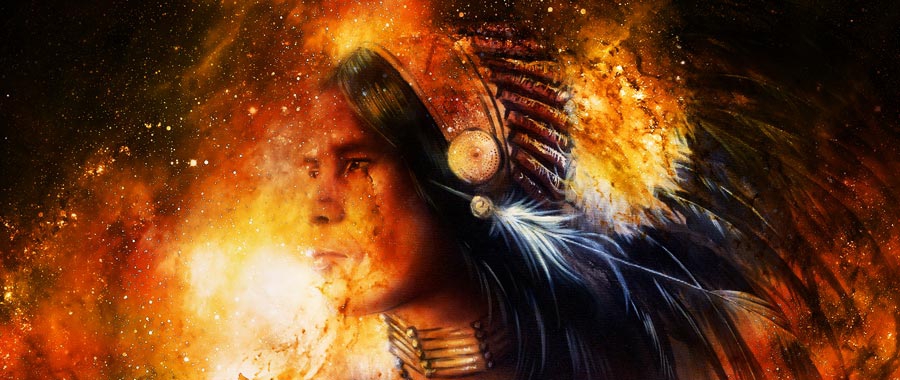
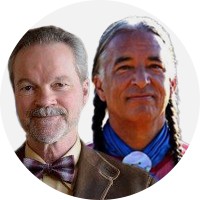
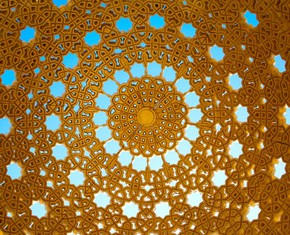
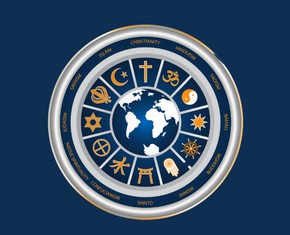
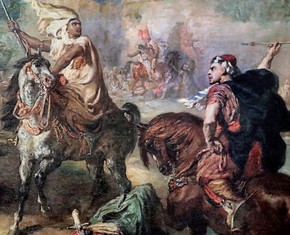









Comments
Sign in or create an account
Continue with Googleor